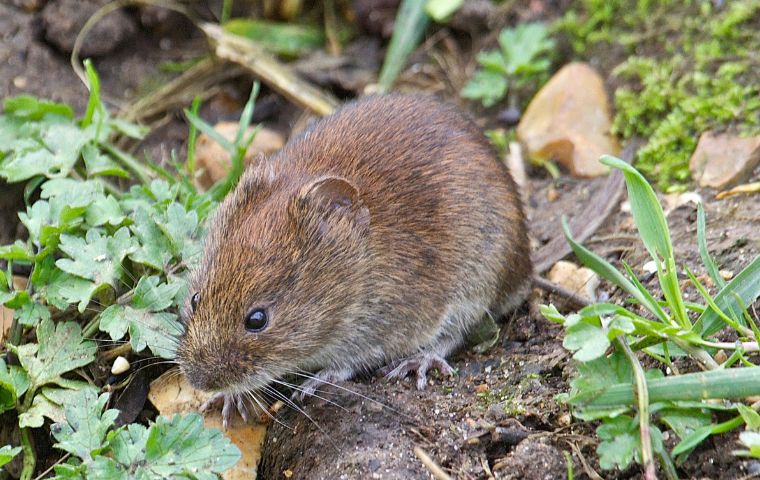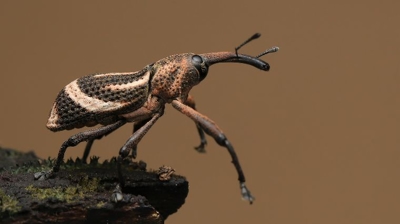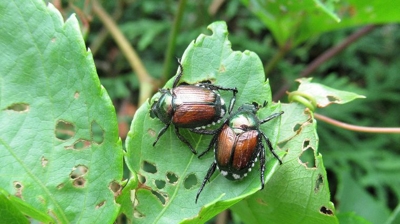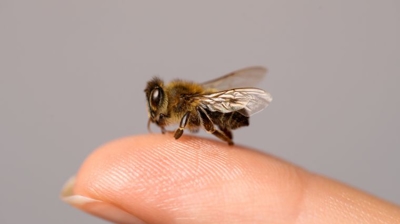
What Are Voles?
Voles are small, burrowing rodents that are commonly mistaken for mice or moles, but they have distinct characteristics and behaviors that set them apart. They belong to the family Cricetidae, which includes other rodents like lemmings and hamsters. Over 100 species of voles exist worldwide, with several species native to North America.
Are Voles Harmful?
Voles, though small and seemingly innocuous rodents, can be surprisingly harmful in various ways—particularly to homeowners, landscapers, farmers, and property managers. Their behavior, diet, and reproductive rate make them a formidable pest when populations go unchecked. Here are some of the ways voles can be harmful:
Extensive Vegetation Damage
Voles are herbivores, and their feeding habits can wreak havoc on a wide range of plants:
- Lawns and Turf: Voles create surface runways and clip grass to maintain these paths, leaving unsightly tracks in turfgrass and undermining lawn health.
- Ornamental Plants and Shrubs: They often gnaw on the bark of shrubs and trees, particularly during winter when other food sources are scarce. This can girdle the plant, effectively killing it by interrupting nutrient and water flow.
- Garden Crops: Voles consume bulbs, tubers, and root vegetables, posing a direct threat to home gardens and commercial crops like carrots, potatoes, and tulips.
- Girdling: As mentioned, voles chew bark around the base of trees and vines. If the girdling is complete, it can kill even mature trees.
- Root Destruction: They also feed on root systems, weakening or killing young trees and vines, which can lead to long-term economic losses for orchard owners.
Property Damage
Voles' burrowing activity can also cause damage to:
- Irrigation Systems: Underground tunnels can compromise irrigation infrastructure by displacing soil and damaging lines.
- Foundations and Retaining Walls: Though less common than with larger burrowing animals, large vole infestations can contribute to soil instability around these structures.
Disease Transmission
Although voles are not as notorious as other rodents (like rats) for spreading diseases, they can still be vectors:
- Parasites: Voles can host fleas, ticks, and mites, which can transmit diseases to humans and pets.
- Zoonotic Diseases: They can carry pathogens such as hantavirus, leptospirosis, and tularemia, although transmission to humans is rare and usually occurs through contact with urine or feces.
Learn more: The Trick To Getting Rid Of Voles In Your Yard
Vole Appearance
Voles are small, stocky rodents that resemble mice or small rats but have distinct physical characteristics that set them apart. Their appearance is often described as compact and robust, with features adapted for their burrowing, foraging, and ground-dwelling lifestyle. Here is what voles look like:
- Length: Typically 4 to 8 inches long (including the tail).
- Tail: Shorter than that of mice—usually about 1 to 2 inches long, and not much longer than the hind legs. This is a key identifying feature.
- Weight: Around 0.5 to 2.5 ounces depending on species and age.
- Stocky and Compact: Voles have a plump, rounded body, unlike the slender form of a typical house mouse.
- Short Legs: Their legs are relatively short, which adds to their ground-hugging posture.
- Blunt and Rounded Snout: Unlike mice, which have a more pointed snout, voles have a blunt nose.
- Eyes and Ears: Small eyes and ears that are partially hidden by fur, making them appear less prominent compared to those of mice.
- Fur Texture: Dense and soft.
- Color: Varies by species, but most commonly brown or grayish-brown on the back, and lighter gray or buff-colored on the belly. Some species may have a reddish or golden tinge.
- Short and Furry Tail: Unlike the long, scaly tail of a rat or mouse, a vole’s tail is short and covered with fine hair. It is one of the easiest ways to differentiate them from other small rodents.
Learn more: What Do Voles Look Like?
Learn more: Voles vs Mice
Learn more: Voles vs Moles
Vole Habitat
Voles are highly adaptable rodents found throughout North America, Europe, and parts of Asia, and they thrive in environments that provide ample ground cover and food sources. Their habitat preferences vary slightly depending on the species, but in general, voles prefer areas where they can remain hidden from predators and where vegetation is abundant. Here's where you're most likely to encounter voles:
Lawns and Landscaped Areas
Voles are commonly found in suburban and residential settings, particularly:
- Well-mulched flower beds
- Dense groundcover or ornamental grasses
- Under shrubs or low-hanging bushes
- Edges of lawns near fields or wooded areas
These areas offer food and shelter. Homeowners often notice their presence through surface runways in the grass or damaged plants.
Meadows, Fields, and Pastures
- Meadow voles, in particular, are named for their preference for open, grassy fields.
- These environments offer ideal conditions: soft soil for burrowing, dense vegetation for cover, and abundant food sources (grasses, seeds, stems, etc.).
- Agricultural pastures and hayfields are frequent vole hotspots, especially if mowing or grazing is infrequent, allowing thick vegetation to accumulate.
Orchards and Vineyards
- Voles thrive in orchards and vineyards where ground vegetation is left unmanaged.
- Fallen fruit, bark, and root systems offer abundant food.
- They often establish nests at the bases of trees or vines and feed on bark during winter, which can lead to tree girdling and death.
Forest Edges and Woodlands
- Voles often inhabit the transitional zones between wooded areas and open fields. These ecotones offer a mix of cover and open feeding grounds.
- Pine voles, in particular, are adapted to life in wooded environments and prefer leaf litter, tree roots, and forest floor debris.
Gardens and Agricultural Crops
Home gardens, especially those with root vegetables (like carrots and potatoes), bulb flowers (like tulips), or legume crops, can attract voles. In commercial agriculture, vole infestations can occur in:
- Row crops (e.g., soybeans, corn, grains)
- Vegetable plots
- Cover-cropped fields, especially if left undisturbed over winter
Areas with Ground Debris or Mulch
Voles prefer environments with dense ground cover—this includes:
- Woodpiles
- Brush piles
- Heavy layers of mulch
- Overgrown weedy areas
These features provide protection from predators and harsh weather, especially during winter.
Along Fences, Foundations, and Outbuildings
Structures with adjacent weedy or grassy edges provide perfect vole corridors. You might find vole burrows or surface trails running along these features, especially if vegetation isn’t well-trimmed.
Wetlands and Riparian Zones
Some vole species prefer moist environments like marshes, ditches, or the banks of streams and ponds. These areas provide thick vegetation and soft soil—ideal for tunneling.
Telltale Signs of Vole Activity
To identify whether voles are present in a given area, look for:
- Surface runways: Narrow, well-worn paths in grass or mulch, often leading to burrow entrances.
- Burrow holes: Small (1–2 inch) holes near runways or at the base of vegetation.
- Gnawed bark or roots: Especially at or just below the soil line on young trees and shrubs.
- Nesting materials: Grass or shredded vegetation in hidden areas.
You’re most likely to find voles in areas with dense ground vegetation, ample food sources, and minimal disturbance—such as meadows, orchards, overgrown gardens, forest edges, and even residential landscapes with heavy mulch or groundcover.
Vole Diet
Voles are primarily herbivorous rodents with a diet focused on a wide range of plant material. Their feeding habits can make them particularly destructive in gardens, orchards, agricultural fields, and landscaped areas. What makes voles especially problematic is that they feed year-round—above ground in warmer seasons and below ground during winter—causing damage in all seasons. Here is what voles eat:
- Grasses and Herbaceous Plants: Grasses make up the bulk of a vole’s diet. They consume both the blades and the roots of various grass species. Voles create well-worn surface runways through grassy areas as they forage.
- Roots and Tubers: Voles are notorious for feeding on the roots of perennial plants, which can lead to wilting, stunted growth, and plant death. They commonly damage root vegetables (e.g., carrots, potatoes, beets), perennials (e.g., hostas, daylilies), and turfgrass (root systems and crown).
- Bulbs and Corms: In landscaped areas and gardens, voles often target tulip bulbs, crocus, gladiolus, and other ornamental flowering bulbs. They will dig these up and consume them entirely, often leaving behind empty holes or chewed remnants.
- Tree Bark and Cambium: During winter or times of food scarcity, voles gnaw on the bark and cambium layer at the base of trees and shrubs. This is especially problematic for young fruit trees (apple, pear, peach), ornamental trees (maple, dogwood, crabapple), and shrubs (juniper, burning bush, arborvitae). Girdling damage (chewing all the way around the trunk) can kill a tree by cutting off the flow of water and nutrients.
- Leaves and Stems: In addition to roots and bark, voles consume tender green shoots, stems, and leaves of vegetables (lettuce, spinach, beans), weeds, and low-growing ornamental plants. Vole damage often appears as irregular chewing or stripping near the base of the plant.
- Seeds and Grains: While not their main dietary staple, voles will eat seeds—especially in fall and early winter. This includes crop seeds (corn, wheat, soybeans) as well as birdseed (if accessible from feeders or storage). Seed predation is a common issue in agricultural fields or gardens with direct seeding methods.
- Fruits and Vegetables: Voles will consume soft fruits and vegetables when available, including apples, berries, tomatoes, squash, and melons (especially if fallen or close to the ground). They may not climb to reach fruit, but anything accessible at ground level is vulnerable.
- Bark from Vines and Groundcover: In vineyards or areas with groundcover plants, voles may gnaw on grape vines, ivy and creeping groundcover, and strawberries (both the foliage and the fruit).
- Occasional Insects or Animal Matter (Rare): Though voles are primarily herbivores, they have been observed eating insects and their larvae (opportunistically), as well as fungi or decaying organic matter. This behavior is not common and generally does not contribute significantly to their diet.
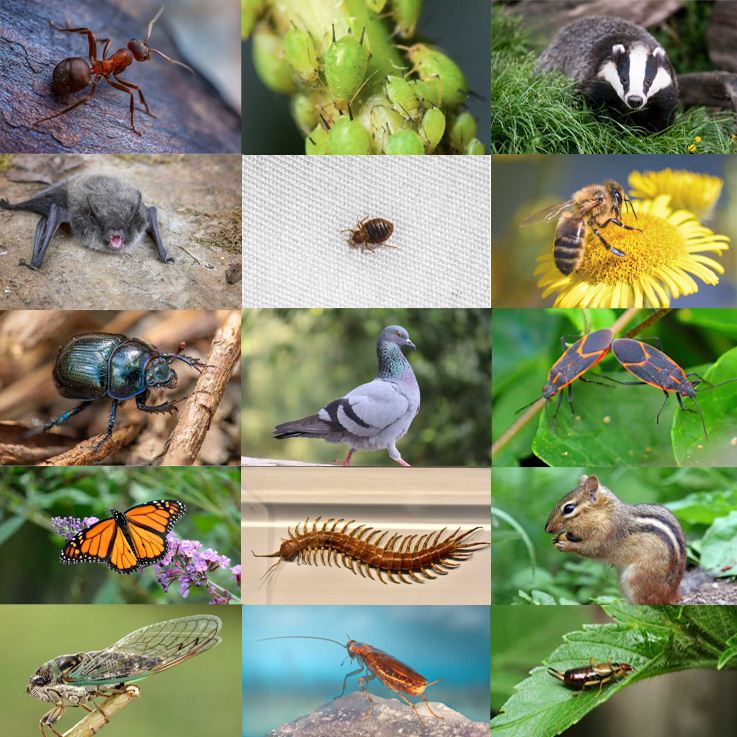
Vole Life Cycle
The life cycle of voles is relatively rapid and plays a significant role in their ability to quickly establish large populations, especially when food and shelter are abundant. Voles are prolific breeders and, under favorable conditions, can reproduce year-round. Here is an overview of the typical life cycle of a vole:
Mating and Reproduction
- Mating Season: Voles are polygamous and can breed year-round, although their peak breeding season is typically in spring and summer. In some regions with mild winters, reproduction may continue throughout the year.
- Mating Behavior: Male voles are territorial but will mate with several females during the breeding season. Mating usually occurs in hidden areas such as burrows, tall grass, or under debris.
- Gestation Period: The gestation period is short, generally around 20 to 30 days, which allows for rapid population growth.
Birth and Early Development
- Litter Size: Female voles typically give birth to 3 to 6 pups per litter, though this can vary depending on environmental conditions and food availability.
- Frequency of Litters: Voles are capable of producing several litters per year—usually between 3 to 5 litters, though some species may have even more under optimal conditions.
- Newborns: At birth, vole pups are hairless, blind, and completely dependent on the mother. They are very small, weighing just a few grams.
Growth and Weaning
- Weaning Age: The pups are nursed for about 2 to 3 weeks, during which time they begin to develop fur and their eyes open. The mother typically cares for them in a nest made of grass and vegetation.
- Development of Skills: By 3 to 4 weeks of age, young voles begin to eat solid food (grasses, seeds, and small roots) and gradually start to leave the nest, although they remain close to the mother.
Sexual Maturity
- Reaching Maturity: Voles mature extremely quickly. They typically reach sexual maturity at 4 to 6 weeks of age. This rapid development allows young voles to begin breeding within a few weeks of being born.
- Breeding Success: By the time they are a couple of months old, young voles are capable of breeding and contributing to the next generation.
Longevity
- Lifespan: Voles have a relatively short lifespan. Most voles live for less than a year, though under optimal conditions (i.e., limited predators and ample food), they may live up to 1–2 years.
- Mortality Rate: Vole populations are heavily influenced by high mortality rates. Many voles fall victim to predators such as hawks, owls, snakes, foxes, and weasels. In addition, harsh environmental conditions, disease, and starvation also contribute to their short lifespan.
- Survival Strategy: Due to their high reproductive rate, voles are able to maintain stable populations even though individual lifespans are short. A single female vole can contribute to the population by producing multiple litters of offspring within a single year.
Burrowing and Habitat
- Burrow Systems: Voles live in underground burrows, which they dig themselves or inhabit tunnels created by other animals. Their burrows provide shelter, protection from predators, and a place to store food. Voles are highly territorial, especially during the breeding season, but they can form colonies when food and space are abundant.
- Tunnels: Voles create complex tunnel networks just below the surface of the soil. These tunnels serve as travel routes, feeding areas, and nesting sites.

Hear From Our Happy Customers
-
"Fantastic & Patient"
Jarvis was fantastic and patient. He answered my questions with an in-depth explanation and addressed all of my areas of concern. Would love for him to be my assigned tech going forward. Well done!
- Yonnette M. -
"Great Communication"
Tech was on time, communication was great, and he accommodated my needs.
- Alonzo W. -
"Professional & Considerate"
I’m pleased with Miche services. Jarvis came today. Professional and considerate. Thank you!
- Judy B. -
"Very Knowledgeable"
The tech that arrived was courteous, professional, and very knowledgeable. He was Great.
- Uerial I. -
"Wonderful Service"
Wonderful service. Jarvis is great. Took care of everything I needed. Thank you!
- Henry P. -
"Exceeds Expectations"
I can’t say enough positive things about this company... The tech that came out, Jarvis went above and beyond my expectations. Thank you guys, I will continue using your services.
- Jake M.

